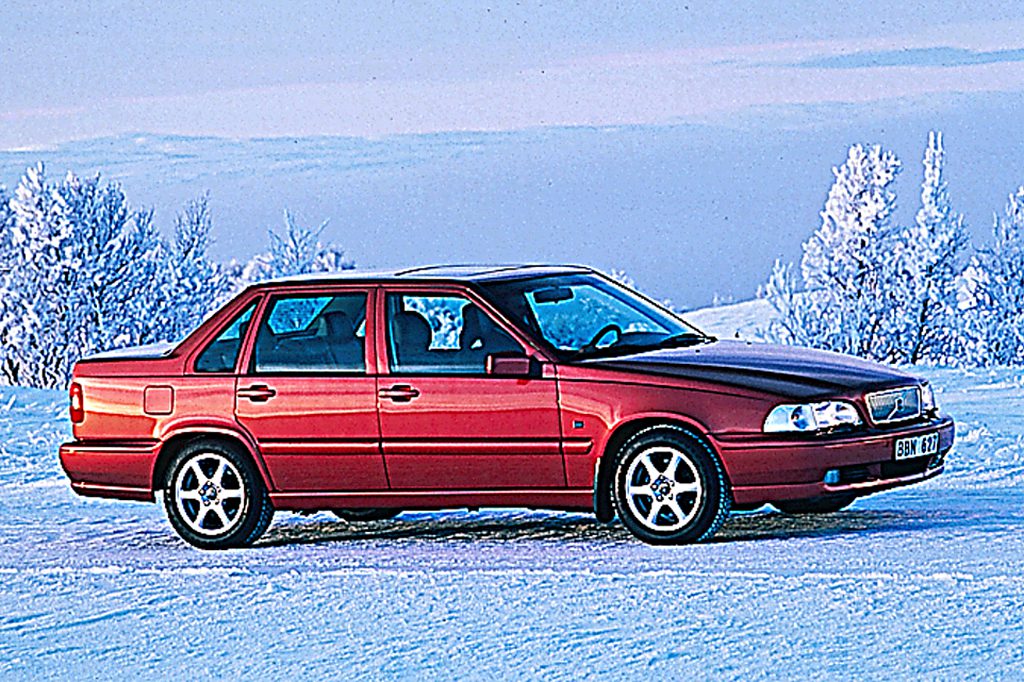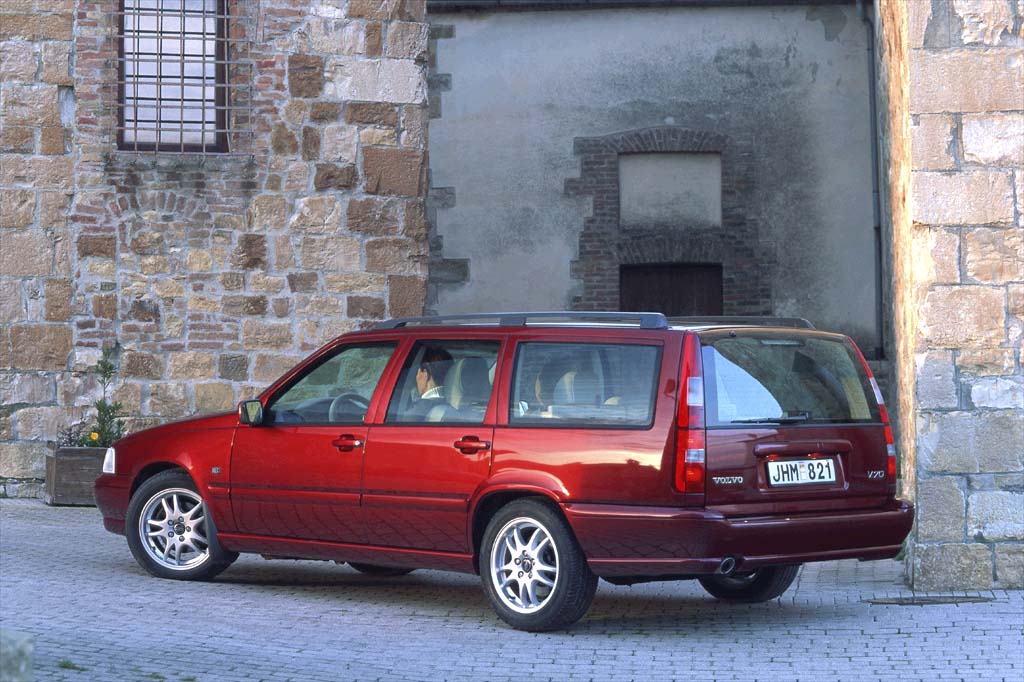| Premium midsize car; Built in Sweden, Belgium, Canada |
|
|
| Good condition price range: $1,900 – $5,300* |

1998 Volvo S70 4-door

2000 Volvo V70

1998 Volvo V70

1998 Volvo Volvo V70

2000 Volvo S70
| Pros: |
|
| Cons: |
|
S70/V70 models have been competitively priced against other near-luxury sedans, such as the Cadillac Catera and Infiniti I30. They offer a wagon and AWD choices that the others ignore. GLT versions, with their strong turbo engine, are the best all-around values in this line of younger-feeling Volvos.
Overview
Volvo replaced its 850 sedan and wagon in spring of 1997 with a pair of early ’98 models: the S70 sedan and V70 station wagon. Both were built from the same platform as the 850, but featured new styling and revised suspensions. The S70 came with front-wheel drive, while the V70 could have either front- or all-wheel drive. Most noticeable of the exterior changes was a more rounded front end, with a reshaped hood and new headlamps. Inside, the sedan and wagon got new interiors with standard dual front and side airbags. Four models were available in each body style: Base, GL, GLT, and T5. A sporty R model came only as a wagon. So did the new Cross Country (V70 XC), which served as an alternative to sport-utility vehicles. Base models used a 2.4-liter dual-overhead-cam 5-cylinder engine with 168 horsepower. GLT cars got a turbocharged version of that engine, producing 190 horsepower. A hotter 2.3-liter turbocharged 5-cylinder went into the T5 and R models. Base and T5 models were available with either 5-speed manual or 4-speed automatic transmission; all others were automatic-only.Volvo’s all-wheel-drive system, as installed on wagons, normally powered the front wheels. When they began to slip, power automatically was transmitted to the rear to improve traction. The V70 XC wagon’s special suspension gave it 6.5 inches of ground clearance (about an inch more than other wagons). A TRACS traction control system was standard on AWD wagons and optional on front-drive models. The system would apply front brakes to limit wheel slippage at speeds under 25 mph. Antilock 4-wheel disc brakes were standard on all models. Rivals included the Acura TL, Audi A6, Infiniti I30, Lexus ES 300, and Saab 900.
Yearly Updates
| 1999 S70/V70 Volvo’s mainstay duo returned in base, GLT, and sporty T5 versions with front-drive, and in V70 R and XC (Cross Country) wagon form with all-wheel drive. An AWD GLT sedan joined the lineup this year. Output of the strongest engine rose from 236 to 247 horsepower, when installed in the R wagon. New electronic brake modulation helped optimize performance in normal stops. Volvo’s traction-control system now included throttle as well as brake intervention. A starter interlock was added to models with manual shift, automatic transmissions gained “adaptive” shift logic, and an engine immobilizer became standard. Dashboard airbags got new two-stage sensors that matched deployment force to road speed and belt use; they also automatically unlocked doors after the bags triggered. |
| 2000 S70/V70 Volvo trimmed its V70 wagon lineup for 2000, dropping the base AWD version and the front-drive performance-oriented T5. Seat-mounted side airbags were modified to help protect the head as well as the chest. Newly standard was Volvo’s WHIPS system, designed to move the front seatbacks and headrests rearward in a rear-end collision, to minimize whiplash. The potent engine in the V70 R AWD now was rated 261 horsepower. |
